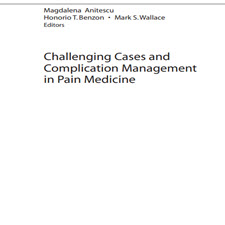بایگانی برچسب برای: Pain Medicine
![Pain.Medicine.An.Essential.Review.[taliem.ir]](https://taliem.ir/wp-content/uploads/Pain.Medicine.An_.Essential.Review.taliem.ir_.jpg)
Pain Medicine
اطلاع رسانیNociception is the measurable physiological response of specialized sensory receptors (nociceptors) to overt or potential tissue damage and is perceived in the CNS—via the spinothalamic tract, the thalamus, and fnally different areas in the neocortex—as pain. Initially, noxious chemical, mechanical, or thermal stimuli are detected at nerve endings of primary sensory neurons with their soma located in the dorsal root ganglion (DRG) for body sensation, and in the trigeminal ganglion (gasserian ganglion) for face sensation. Specialized receptors (transducers) located at the cell membrane of sensory nerve endings translate the intensity of a given stimulus into action potential frequency, which results in the emission of glutamate and peptides in the respective area in the spinal cord dorsal horn (mostly superfcial laminae I and II with some projections to lamina V). Nociceptors can be divided into different groups by means of their anatomical structure, their characteristic expression of various proteins or the distinct receptors at their terminals, as described below.

Challenging Cases and Complication Management in Pain Medicine
اطلاع رسانیA 54-year-old male is brought to an emergency room via ambulance. He is obtunded and is breathing shallowly. He responds minimally to stimulation. His wife states that “he was sleepy today but had more pain than usual.” She calls for the ambulance when he stopped breathing. His past medical history is signifcant for multiple back surgeries, which have left him with chronic pain. His wife says his pain has gotten worse over the past few months. She also reports that he takes multiple medications for his pain, including opioids, but she does not know which specifc names or doses. He has a longstanding relationship with his current pain physician, and his wife believes that he may have recently had his opioid medication increased, although she is not certain. His blood pressure is 90/72, heart rate is 105, and respiratory rate is 6. Oxygen saturation is 92%, and oral temperature is 38 °C. The patient is not able to answer questions or follow commands, although he is arousable with sternal stimulation. Physical exam shows normal pupils that are round, equal in size, and reactive to light. A full body exam shows no signs of trauma or needle marks. No topical patches are found on his body. Breath sounds are shallow but clear. The abdomen is soft, and bowel sounds are absent.

